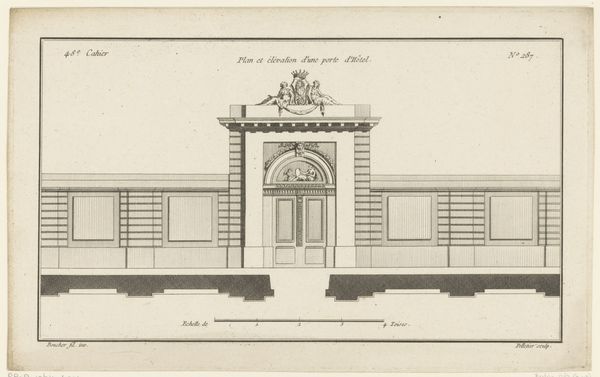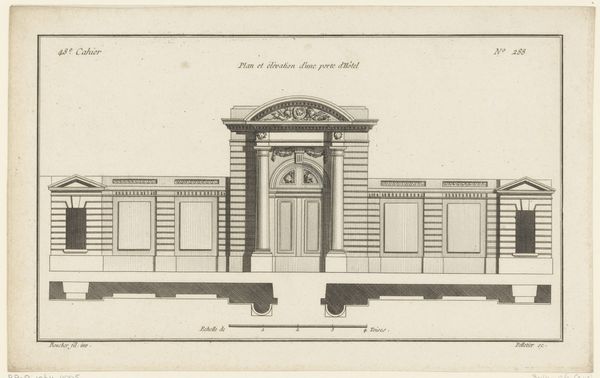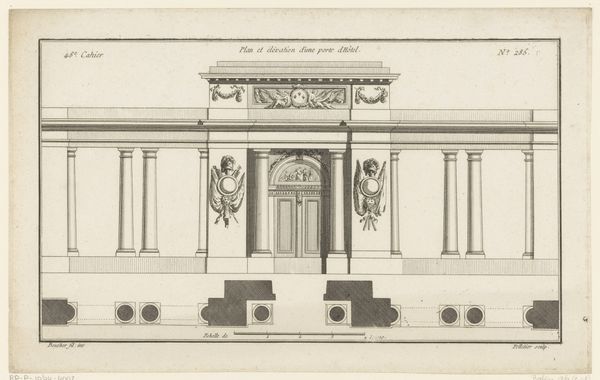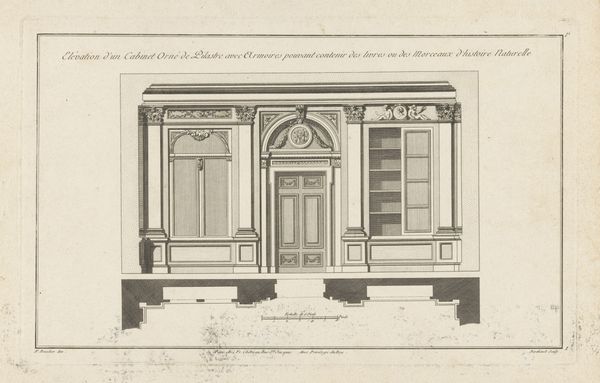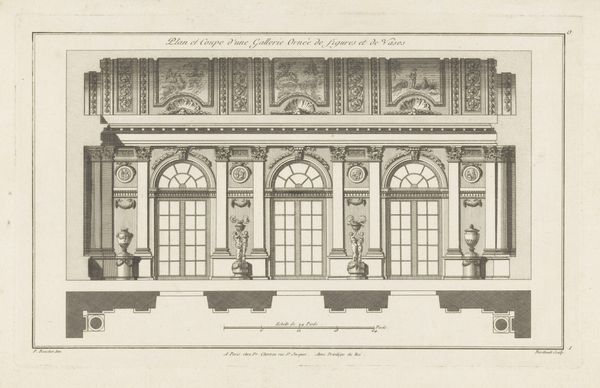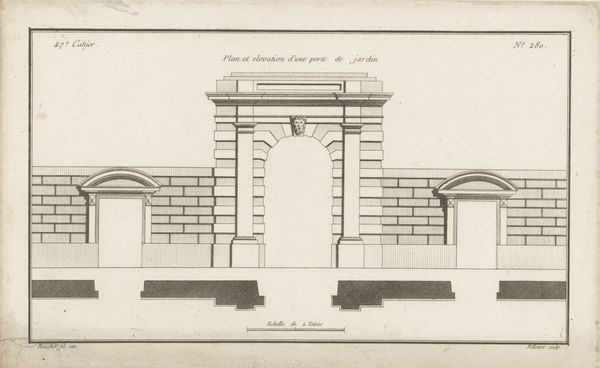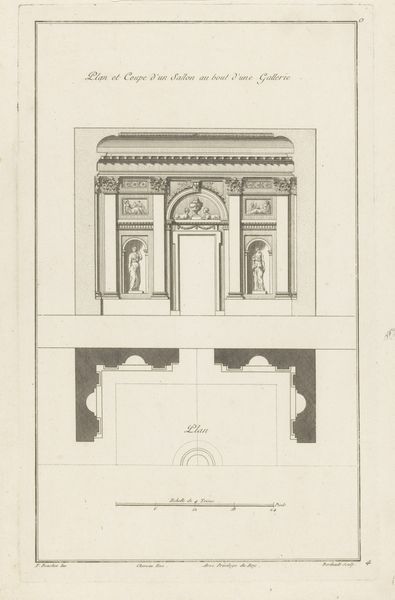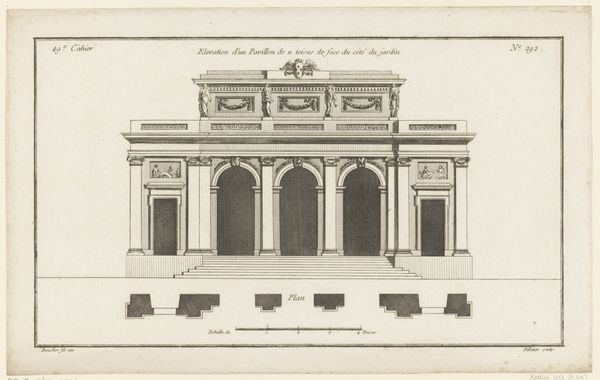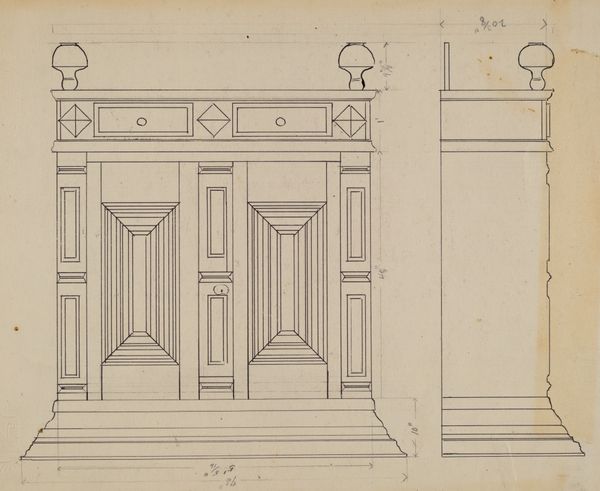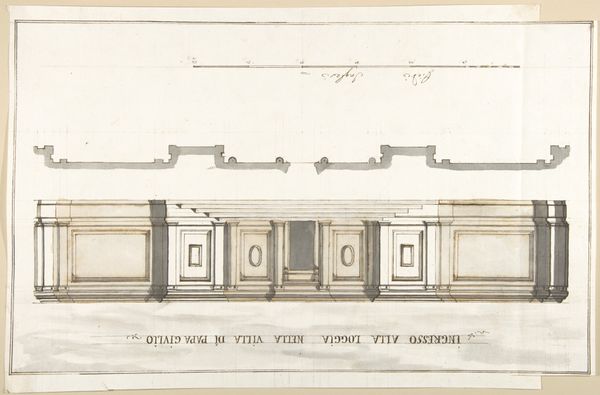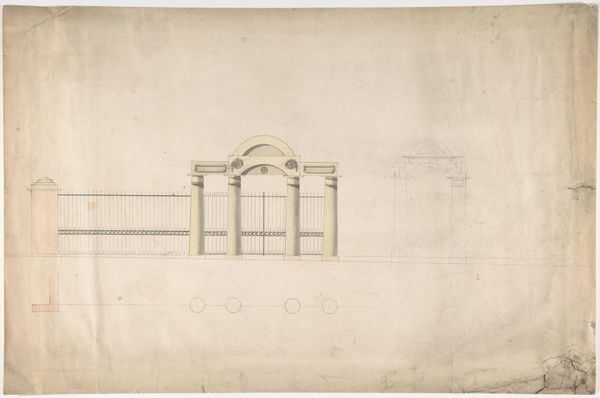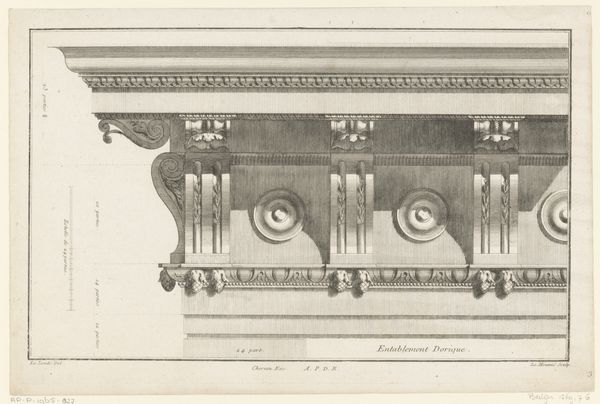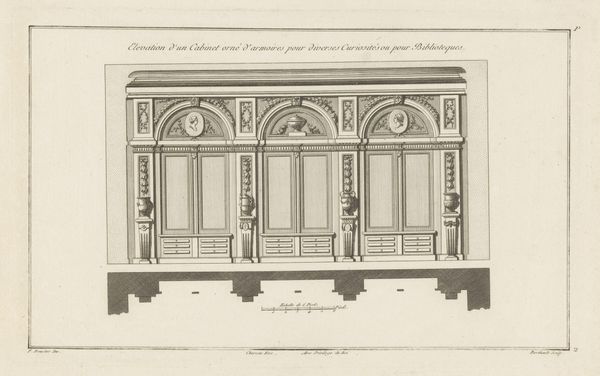
drawing, engraving, architecture
#
drawing
#
neoclacissism
#
old engraving style
#
classical-realism
#
form
#
geometric
#
column
#
line
#
cityscape
#
engraving
#
architecture
Dimensions: height 205 mm, width 328 mm
Copyright: Rijks Museum: Open Domain
Editor: This is Jean Pelletier’s "Poort met zuilen," or "Gate with Columns," an engraving from the 1770s housed at the Rijksmuseum. I'm immediately struck by how precise and architectural it feels, almost like a blueprint. What catches your eye? Curator: The precision is certainly key! It reflects the Neoclassical fascination with order and reason. But beyond that, consider the gate itself. Gates are potent symbols, aren’t they? Editor: Definitely. A threshold between spaces. Curator: Precisely. A liminal space, promising entry, or perhaps barring it. What emotional associations do you find yourself making when you gaze upon it? Editor: I suppose there is an implication of wealth, even exclusivity, considering its grand design. But beyond that, it looks quite severe, a little cold maybe. Is it meant to intimidate, or to welcome? Curator: An interesting tension. Pelletier’s architectural plan becomes a vessel for societal anxieties and aspirations, doesn’t it? The symbolism would have resonated differently depending on the viewer's social standing, their understanding of power, and what the gate *represents* to them. Think about how eagles evoke Rome and the grand empire! It also asks, "What cultural memory is embedded in architectural forms?" Editor: It's amazing how much is conveyed through line and form. Thanks, that gives me a lot to think about. Curator: Indeed. Each element speaks volumes. We might never look at a gate the same way.
Comments
No comments
Be the first to comment and join the conversation on the ultimate creative platform.
